The Mirror, Vol. 13, No. 620
During the week, as the the political leaders of the G8 countries met in Italy, global warming was one of the major topics of their meeting – why it happens and what could be done against it in future: how to use energy more wisely, and save energy where possible.
During the same week, the challenge of using more renewable energy also in Cambodia got a new focus through the visit of the former Japanese Minister of Foreign Affairs of 1993, Mr. Muto Kabun [武藤 嘉文] – we mirrored reports on Thursday, 9.7.2009, and on Saturday, 11.7.2009. As a personal concern of Mr. Muto, he discussed the need for an increased use of renewable energy with the Cambodian Prime Minister, and he will try to motivate the administration of the Japanese Official Development Assistance – ODA – to support the increased use of renewable energy in Cambodia. He came with representatives of the SANYO company of Japan, which has worked on solar energy for years, and this company may be looking also for new investment possibilities in Cambodia. It was reported that the Prime Minister is very interested in these developments.
This is timely and welcome – and one can only hope that the different Cambodian organizations that have been working since many years with the same concern will now also receive more attention. We mention here just one as an example for others – the Center for Livestock and Agriculture Development – CelAgrid – which has been working for many years on the optimization of tubular plastic bio-digesters in integrated farming systems, creating bio-gas for household cooking at the village level, making it possible to save firewood.
Such initiatives in Cambodia did not, so far, receive the wide attention they deserve, for their pioneering activities. One can only hope that a focus from Japan on renewable energy will also make local valuable experiences more widely acceptable.
An inscription at the airport of Singapore, where several energy saving and resource recycling and saving programs are presented, points out to an important problem: it is not, first of all, missing technology, but first of all “a mindset change” is necessary to move into a new area of energy consciousness – which then also saves considerable amounts of money:
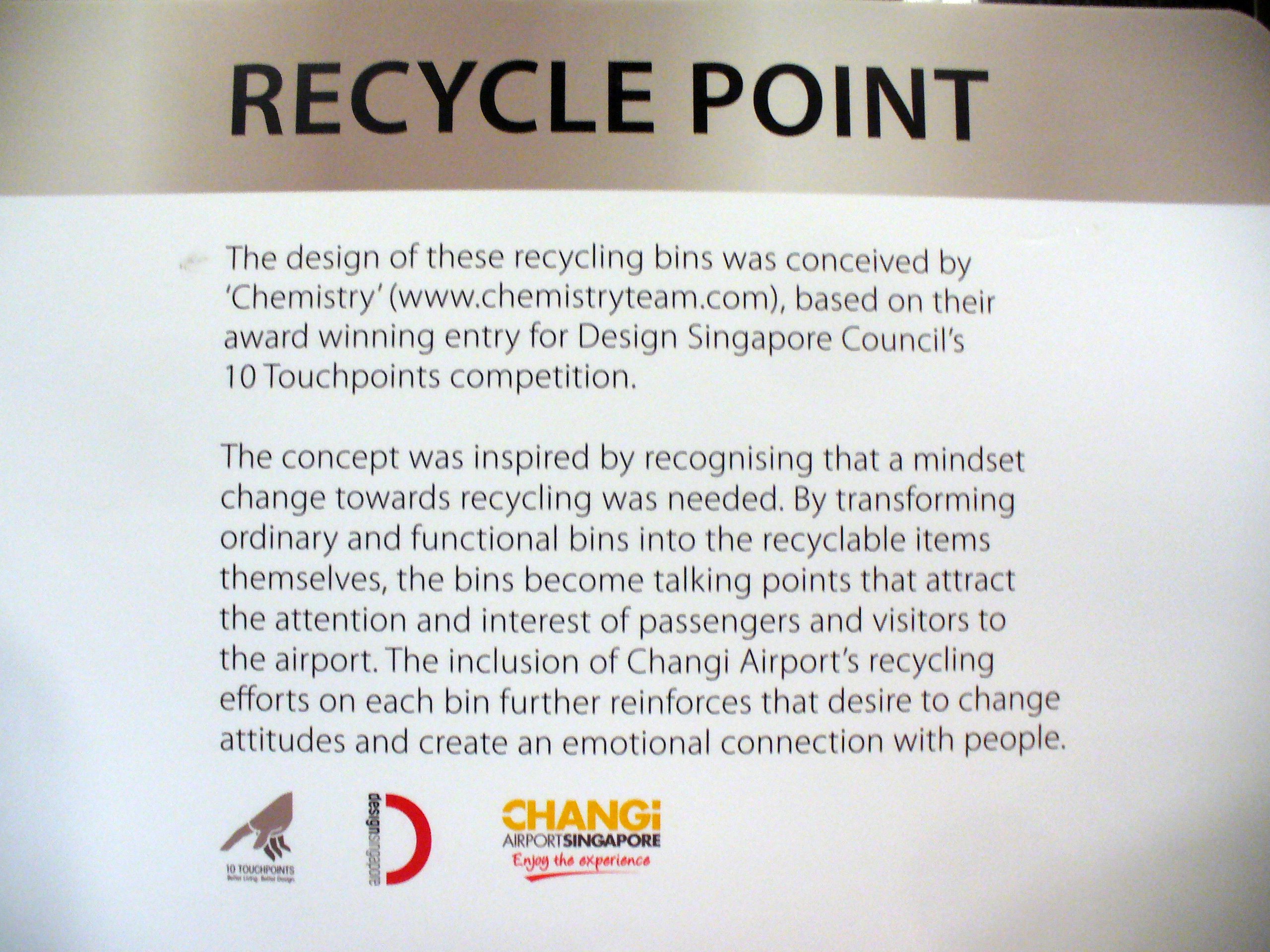
A new mindset is necessary
That such a mindset change has already started in some places, can be seen easily in the way of construction new airports: the design obviously tries to shade the main buildings, protecting them by special roof constructions from excess heating up, allowing also a natural flow of air to assist this cooling process – thus saving electric energy otherwise used for air conditioning.
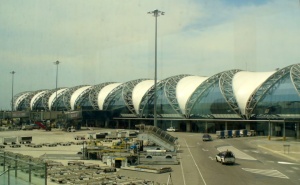
Bangkok Airport
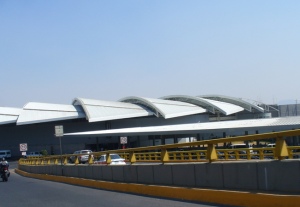
Cairo Airport
Not only the roofs – also protruding canopies and special panels in front of the windows serve to keep too much sunlight out.
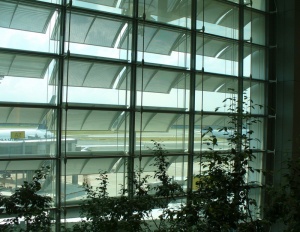
Sun shade panels in Singapore Airport
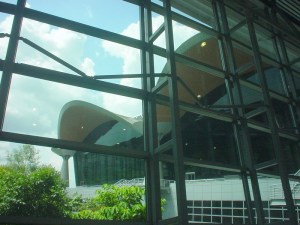
Protruding rooflets provide shade at Kuala Lumpur Airport
It is astonishing to compare the new Phnom Penh International Airport building, where such procedures to save energy do not seem to have been applied at all.

Phnom Penh International Airport
It is interesting to observe also that many new big buildings in Phnom Penh are designed to make the users of every unit buy and install a separate air-conditioner, and regularly pay the high price for electricity. In many other countries, where a new energy consciousness has resulted in a new mindset, it is usual since years to equip such buildings with cheaper and more efficient central cooling systems, installed on the roof – like an example can be seen on the second picture from Sydney:
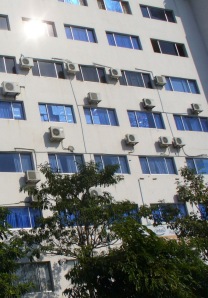
Many air conditioners for every unit
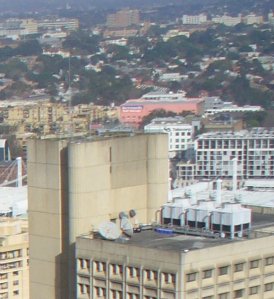
Rooftop cooling unit for the whole building
It is a long journey into the future on which Cambodian society is now starting to em bark on. Hydro-power is being developed on a large industrial scale already. In order to reach out to more and more rural areas, bio-digesters, using animal and human waste as their source of energy, are a relatively easy and not so expensive technology.

Biogas unit for the rural areas
One can assume that a large part of international investments will focus, however, more on wind energy, and on photo voltaic equipments, producing electricity directly from the light of the sun.
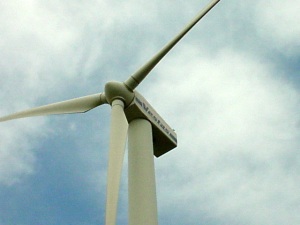
Electricity generated from wind
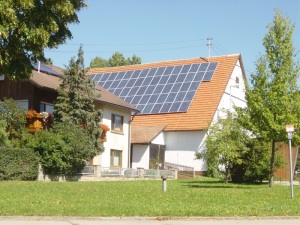
Electricity from the sun
Please recommend us also to your colleagues and friends.

Energy is more expensive in Cambodia compare with her neighbouring countries which makes Cambodia less competative. It has been complaining that rice exporters is more expensive in Cambodia. At present rice mill owners are investing on gasification using rice husk as energy source with the expectation that the price of Cambodian rice will be more competative at the international market.
….,,..,.,thanks!.,,.,.,
using energy wisely is so important..
just think and be resposible..
there are more generations to come..
if most of the people want to have brighter future…
be patient in using energy,,,,
Nice blog.I like the blog and information.I think the news about natural energy is interesting.I will share this to others.Thanks.